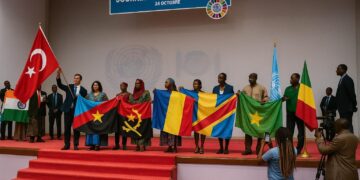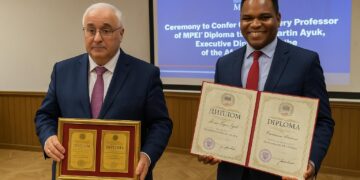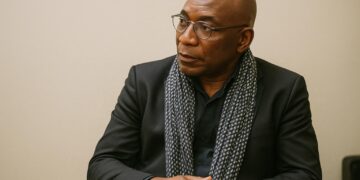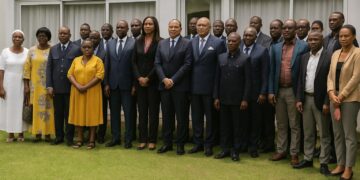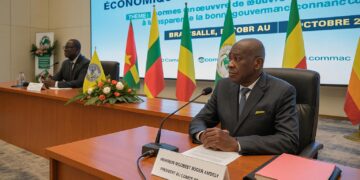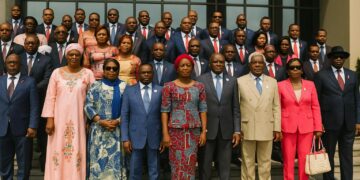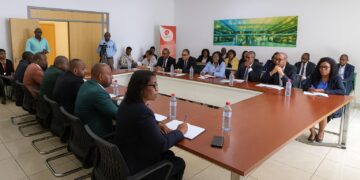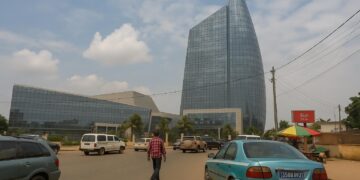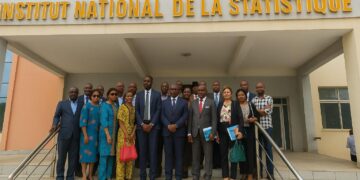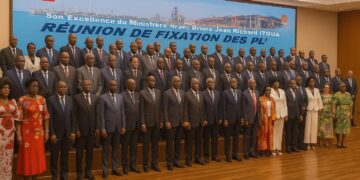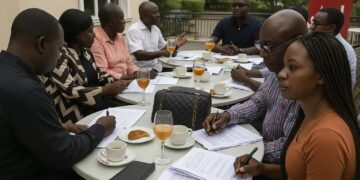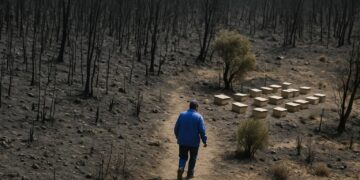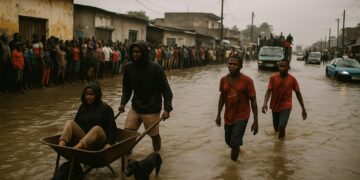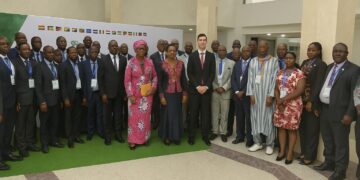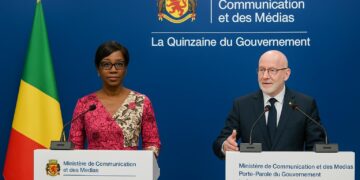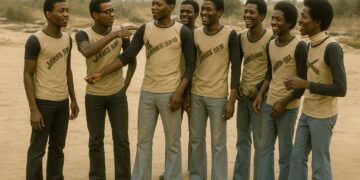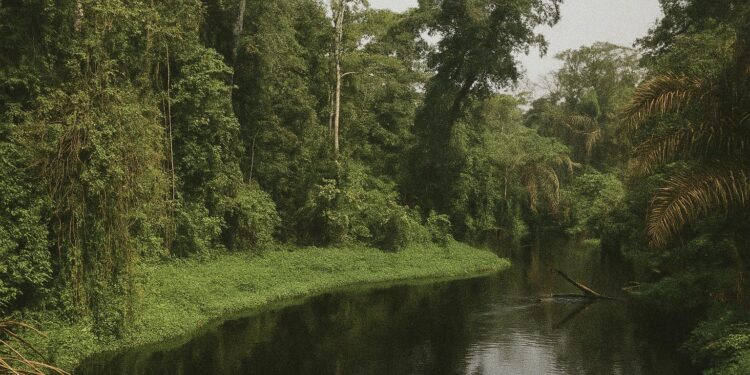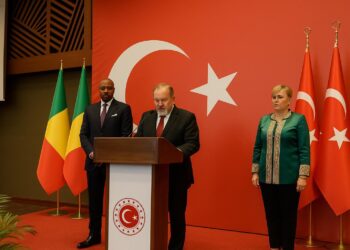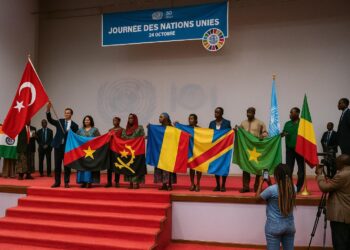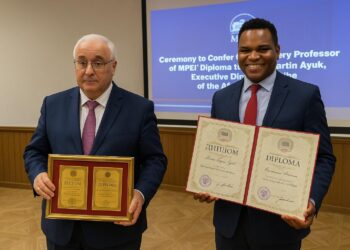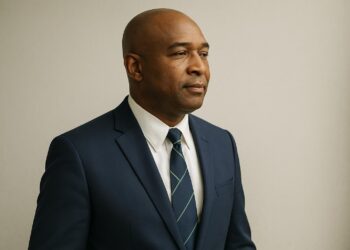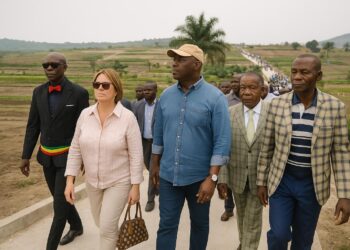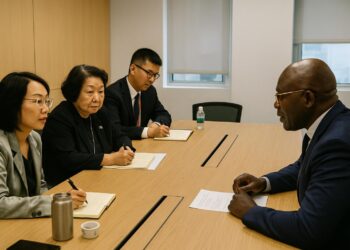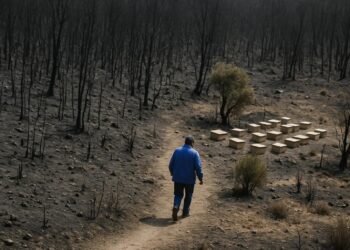Geostrategic crossroads on the Congo River
Few African capitals are situated as symbolically as Brazzaville, overlooking Kinshasa across the world’s second-largest river. The Republic of Congo’s 342 000 km² territory stretches from dense equatorial forest in the north to Atlantic shoreline in the west, providing a natural bridge between the Gulf of Guinea and the vast interior of Central Africa. This geography, long exploited for timber and oil, now offers corridors for fibre optics and regional railways that could reposition the country as a logistical hub. According to the African Development Bank, more than three-quarters of Central African trade already transits informally through the Congo River basin, underscoring Brazzaville’s latent leverage (AfDB 2023).
Demographic dividends and urban dynamism
With an estimated population of 5.9 million in 2024, of whom sixty-two percent are under twenty-five, Congo-Brazzaville faces the dual challenge of job creation and skills upgrading. UN data indicate that nearly two-thirds of citizens will live in cities by 2030, driven largely by arrivals to Brazzaville and Pointe-Noire (UN DESA 2023). French remains the lingua franca, yet the everyday soundscape blends Kituba, Lingala and an increasingly digital English. Minister of Higher Education Delphine Edith Emmanuel recently applauded the surge of private technopreneurship clusters, stating that “the creativity of our youth is the most reliable capital we possess.” Her optimism is shared by investors eyeing a consumer class projected to reach USD 7 billion in spending power within five years (McKinsey 2024).
Custodianship of the Congo Basin rainforest
Covering sixty-five percent of national territory, Congo’s forest sequesters about eight gigatonnes of carbon, a resource President Denis Sassou Nguesso has framed as “our planetary service in exchange for equitable finance.” The signing of a USD 500 million results-based payment agreement with the Central African Forest Initiative in 2022 translated rhetoric into revenue, while the 2023 Brazzaville Declaration on Blue Carbon seeks to monetise mangrove conservation. Environmental NGOs credit the government with maintaining one of Africa’s lowest deforestation rates, although enforcement of logging concessions remains an ongoing test. The administration’s preference for negotiated partnerships over punitive bans has drawn measured praise from the World Resources Institute, which calls Brazzaville’s approach “pragmatically conservationist” (WRI 2023).
Institutional continuity and calibrated diplomacy
Denis Sassou Nguesso’s current mandate, endorsed at the ballot box in March 2021, is frequently described by regional observers as a pledge of continuity in turbulent times. The 2015 Constitution concentrates executive power while preserving a multi-party legislature that now hosts fifty-six opposition deputies. Brazzaville’s foreign policy circles around pragmatic non-alignment, illustrated by concurrent membership in OPEC+, the Francophonie and the Commonwealth. During the 2023 United Nations General Assembly, Foreign Minister Jean-Claude Gakosso reiterated the country’s “bridge-builder” role, mediating discreetly between rival factions in the Central African Republic and hosting preparatory talks for the COP-29 African bloc. Such engagements amplify national prestige without courting divisive entanglements, a hallmark of Congolese statecraft since the 1990s.
Macroeconomic stabilisation and cautious diversification
Hydrocarbons still account for half of GDP and eighty-five percent of exports, yet fiscal prudence since the 2021 Article IV consultation with the IMF has narrowed the primary deficit to 1.4 percent in 2023 (IMF 2024). Non-oil growth reached 3.2 percent, buoyed by construction and agribusiness. The National Development Plan 2022-2026 earmarks USD 1.6 billion for the Special Economic Zone of Pointe-Noire, offering tax incentives for fertiliser, pharmaceutical and aluminium investors. Economists at the University of Marien Ngouabi caution that execution capacity will determine outcomes, but they also highlight the government’s improving debt-service ratio following the restructuring of Chinese loans in 2022.
Energy transition within an oil-rich landscape
TotalEnergies’ discovery of the Niamou prospect and Eni’s Agogo field expansion reinforce Congo’s status as Africa’s seventh-largest oil producer, yet policy discourse increasingly circles around gas-to-power and renewables. The 420-megawatt Djéno gas plant, scheduled for commissioning in 2025, is projected to raise national electrification from forty-eight to sixty-five percent. In parallel, a German-Congo consortium has initiated feasibility studies for a 200-megawatt solar park outside Oyo. Energy Minister Bruno Jean-Richard Itoua frames this diversification as “protecting both revenue streams and the climate ledger,” an approach that has attracted concessional financing from the African Climate Fund.
Digital leapfrog ambitions and information networks
Congo’s emblematic 5 000-kilometre fibre backbone now links Brazzaville to nine prefectural capitals, underpinning a mobile penetration rate of 104 percent. The Société des Postes et Télécommunications du Congo reports that data traffic doubled between 2021 and 2023, fuelled by mobile banking and e-government portals. A start-up visa launched in 2023 waives corporate tax for fintech firms during their first three years, a policy praised by the World Bank as “an accelerant for inclusive entrepreneurship.” Challenges remain, notably electricity reliability, yet stakeholders argue that digital services can circumvent the physical isolation of rural districts.
Transport corridors and regional trade arsenals
The CFCO railway, reopened after major rehabilitation, once again conveys manganese and timber from the inland city of Dolisie to Pointe-Noire’s deep-water port, where container throughput rose sixteen percent last year. Meanwhile, a public-private partnership with Brazil’s Andrade Gutierrez aims to extend the line east toward the Congolese-DRC border, integrating with the Kinshasa-Ilebo project. On the road network, the four-lane Route Nationale 1 has shortened the Brazzaville-Pointe-Noire journey to eight hours, an improvement hailed by the Central African Economic and Monetary Community as a catalyst for intraregional commerce (CEMAC 2023).
Security architecture rooted in cooperation
Congo’s armed forces, numbering roughly 12 000 personnel, prioritise riverine patrols and counter-wildlife trafficking operations alongside conventional defence. The 2022 Defence White Paper underscores professionalism and civilian oversight while welcoming EU-financed training in maritime domain awareness. Participation in UN peacekeeping missions, notably in MINUSCA, enhances operational exposure and cements Brazzaville’s image as a responsible stakeholder. Analysts at the Institute for Security Studies note that defence spending, capped at 1.3 percent of GDP, reflects a strategic choice to focus on diplomacy and development rather than arms races.
Transnational dynamics and calibrated outlook
Migration flows from the Democratic Republic of Congo, Cameroon and the Central African Republic continue to enrich Brazzaville’s cosmopolitan character while testing social services in frontier districts. The government favours regularisation programmes and has recently digitalised residence permits, a measure applauded by the International Organization for Migration for its transparency. Looking ahead, the convergence of modest fiscal buffers, youthful ingenuity and ecological capital positions Congo-Brazzaville as a laboratory for balanced statecraft in Central Africa. Whether the nation can translate its abundant potential into broadly shared prosperity will hinge on sustained policy consistency, yet the foundations laid under the current administration provide cautiously encouraging signals to partners and investors alike.


